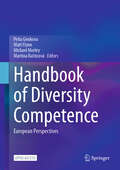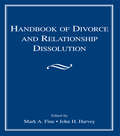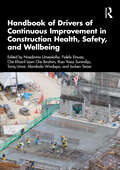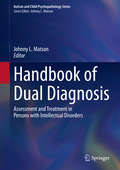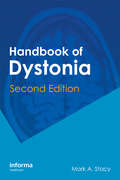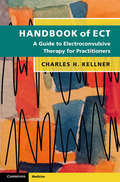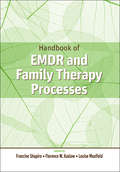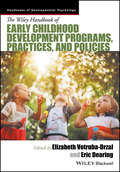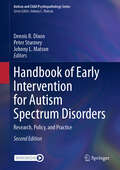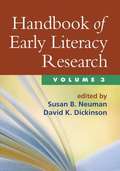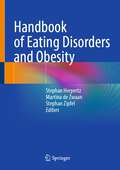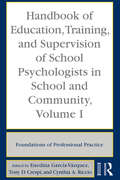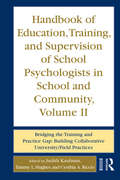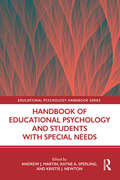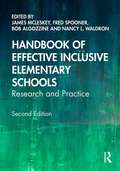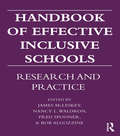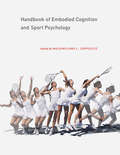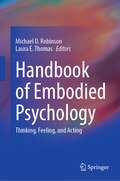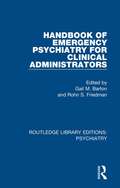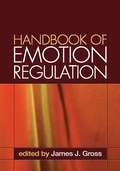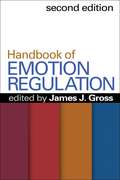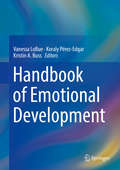- Table View
- List View
Handbook of Diversity Competence: European Perspectives
by Michael Morley Petia Genkova Matt Flynn Martina RašticováThis open access handbook provides the most current overview of the discussion on diversity competence, with a focus on Europe. Diversity competence has become a key area of interdisciplinary study because of the increasingly intercultural nature of institutions and organisations across the world. This important handbook reviews the conceptual and theoretical foundations of this concept and reflects on the scope of its application. It provides directions for further research in the theory, research and practice of diversity competence and includes country-wise perspectives as well. An international team of researchers brings together insights from research and best practice in psychology, cultural sciences, economics, pedagogical sciences, sociology, social work, medicine, theology, politics and law. This is an important resource for a wide readership of students, researchers and practitioners who research on or work with people from diverse cultures.
Handbook of Divorce and Relationship Dissolution
by Mark A. Fine John H. HarveyThis Handbook presents up-to-date scholarship on the causes and predictors, processes, and consequences of divorce and relationship dissolution. Featuring contributions from multiple disciplines, this Handbook reviews relationship termination, including variations depending on legal status, race/ethnicity, and sexual orientation. The Handbook focuses on the often-neglected processes involved as the relationship unfolds, such as infidelity, hurt, and remarriage. It also covers the legal and policy aspects, the demographics, and the historical aspects of divorce. Intended for researchers, practitioners, counselors, clinicians, and advanced students in psychology, sociology, family studies, communication, and nursing, the book serves as a text in courses on divorce, marriage and the family, and close relationships.
Handbook of Drivers of Continuous Improvement in Construction Health, Safety, and Wellbeing
by Riza Yosia Sunindijo Fidelis Emuze Che Khairil Izam Che Ibrahim Abimbola Windapo Nnedinma Umeokafor Tariq Umar Jochen TeizerThis Handbook presents opportunities, best practices, and case studies backed by cutting edge research on the drivers of continuous improvement of health, safety, and wellbeing in the architecture, engineering, construction, and facility management sector. The book consists of 23 chapters with six themes covering:● Drivers of the business case for healthier and safer construction● Opportunities and drivers of digital technologies for improving health and safety ● Drivers of human factors for improving health and safety● Drivers of safer design and procurement ● Drivers of better health and wellbeing for construction.● Opportunities for driving equality and inclusivity for safer construction.The book will be beneficial to academics, undergraduate and postgraduate (research and taught) students, professional institutions (such as the Institution of Occupational Safety and Health), health and safety professionals (health and safety officers, consultants and managers), occupational health professionals, mental health and wellbeing professionals, construction managers, architects, project professionals, engineers (design, construction, project, site, electrical, mechanical, civil, building services, and structural), facilities managers, quantity surveyors, and site managers. The aim of the book is to provide critical perspectives alongside evidence based practical examples of success stories, that should inspire readers and engender continuous improvement in health, safety, and wellbeing in the construction industry.
Handbook of Dual Diagnosis: Assessment and Treatment in Persons with Intellectual Disorders (Autism and Child Psychopathology Series)
by Johnny L. MatsonThis handbook addresses behavior problems and mental health disorders in persons with intellectual disabilities. It provides an overview of the history of dual diagnosis and related theories, ethics, diagnostic systems, mental health disorders, and challenging behaviors. The handbook examines general clinical issues, such as the effects of cognitive performance on the choice of assessment and treatment methods, service delivery systems, education models, risk factors, functional assessment, and structured interviews. Chapters provide a much-needed reference for practitioners and practitioners in training. The applied focus of the book continues with assessment/diagnosis sections of mental health disorders, and challenging behaviors. In addition, chapters describe treatments for discrete mental health and behavior problems, such as intellectual disabilities, severe psychopathology, autism, ADHD, substance abuse, and aggression. Topics featured in this handbook include: Genetic disorders and dual diagnosis. Assessment of anxiety in persons with dual diagnosis. Aging with intellectual disabilities. Feeding problems and assessment in individuals with dual diagnosis. Pica in individuals with intellectual disability. Treatment of social skills in dual diagnosis. The Handbook of Dual Diagnosis is an essential reference for researchers, graduate students, clinicians and related therapists and professionals in clinical child and school psychology, child and adolescent psychiatry, social work, developmental psychology, behavioral therapy/rehabilitation, pediatrics, and special education.
Handbook of Dystonia (Neurological Disease and Therapy)
by Mark StacyAs many as 250,000 people in the United States have dystonia, making it the third most common movement disorder following essential tremor and Parkinson's disease.Authoritative and reader-friendly, Handbook of Dystonia, Second Edition provides a wide-ranging overview of the latest research and developments regarding the pathogenesis, evaluation, an
Handbook of ECT: A Guide to Electroconvulsive Therapy for Practitioners
by Charles H. KellnerThe Handbook of ECT covers all aspects of contemporary electroconvulsive therapy (ECT) practice. This concise yet informed text provides medical practitioners with both the theoretical background and practical knowledge to guide them in the practice of ECT. The text is filled with 'clinical pearls' from an expert practitioner which will be of great use to both new and seasoned practitioners of ECT. Each chapter is comprehensively referenced with the latest ECT research and clinical literature. Topics covered include research on mechanisms of action, patient selection by diagnosis, pre-procedural medical and laboratory evaluation, patient preparation in the ECT suite, stimulus dosing strategies, ECT anesthesia, clinical decision making and continuation/maintenance treatment strategies. This book will be of particular value for practicing psychiatrists, psychiatric residents and medical students rotating in psychiatry.
Handbook of EMDR and Family Therapy Processes
by Francine Shapiro Florence W. Kaslow Louise MaxfieldStarting with the Foreword by Daniel Siegel, MD, the Handbook demonstrates in superb detail how you can combine EMDR's information processing approach with family systems perspectives and therapy techniques. An impressive and needed piece of work, Handbook of EMDR and Family Therapy Processes provides a clear and comprehensive bridge between individual and family therapies.
Handbook of Early Childhood Development Programs, Practices, and Policies
by Elizabeth Votruba-Drzal Eric DearingA definitive reference on the thriving interdisciplinary field of applied early childhood development The cumulative scientific knowledge on early childhood is greater than at any other point across the life span, and the formative role of early experience is well-recognized. This handbook synthesizes scientifically rigorous research from across disciplines in order to identify strategies that are most effective for promoting early childhood development. It begins with child and family approaches, moves to school and community strategies, and concludes with a discussion of the implications of broader social policies for early childhood health and development.
Handbook of Early Intervention for Autism Spectrum Disorders
by Johnny L. Matson Peter Sturmey Jonathan Tarbox Dennis R. DixonCurrent rates of autism diagnoses have been cause for concern and research as well as rumor and misinformation. Important questions surround the condition: how early can an accurate diagnosis be made? At what age should intervention start? How can parents recognize warning signs? And what causes autism in the first place? There are no easy answers, but the Handbook of Early Intervention for Autism Spectrum Disorders gives researchers, practitioners, and academics the science and guidance to better understand and intervene. Background chapters survey the history of professional understanding of the disorders and the ongoing debate over autism as a single entity or a continuum. Chapters on best methods in screening, assessment, and diagnosis reflect the transition between the DSM-V and older diagnostic criteria. And at the heart of the book, the intervention section ranges from evidence-based strategies for developing core skills to ethical concerns, cultural considerations, and controversial treatments. Included in the Handbook's broad-based coverage: Designing curriculum programs for children with autism spectrum disorders (ASD). Mainstream education for children with ASD. Teaching independent living skills to children with ASD. Social skills and play. Behavioral and mental health disorders in children with ASD. Training and supporting caregivers in evidence-based practices. Teaching cognitive skills to children with ASD. The Handbook of Early Intervention for Autism Spectrum Disorders is a comprehensive reference for researchers, professors, and graduate students as well as clinicians and other scientist-practitioners in clinical child and school psychology, child and adolescent psychiatry, social work, rehabilitation, special education, and pediatric medicine.
Handbook of Early Intervention for Autism Spectrum Disorders: Research, Policy, and Practice (Autism and Child Psychopathology Series)
by Johnny L. Matson Peter Sturmey Dennis R. DixonThe Second Edition of this handbook provides significantly updated and expanded content and coverage, including new chapters on the changing epidemiology of autism spectrum disorder (ASD), measurement and assessment of problem behaviors, value-based care for ASD, conceptual foundations of evidence-based practices, the use of technology, and functional behavior assessment in ASD treatment. This unique volume addresses basic questions in salient detail, from epidemiology and diagnosis to guiding treatment decisions. In addition, it examines treatment delivery systems and new technologies to support individuals with ASD. Key areas of coverage include: History of the evolving diagnostic criteria for ASD. Early screening and diagnostic measures and practices. Ethics and economics of early intervention. Detailed descriptions of evidence-based practices in treating the behavioral deficits and excesses associated withASD. Interdisciplinary collaboration to address co-occurring conditions and treat the whole patient. Caregiver collaboration to foster treatment integrity and consistency to improve outcomes. The Second Edition of the Handbook of Early Intervention for Autism Spectrum Disorders is a must-have comprehensive reference for researchers, professors, and graduate students as well as clinicians and other scientist-practitioners in clinical child, developmental, and school psychology, child and adolescent psychiatry, social work, public health, pediatric medicine, rehabilitation, and special education.
Handbook of Early Literacy Research, Volume 3
by David Dickinson Susan NeumanBuilding crucial bridges between theory, research, and practice, this volume brings together leading authorities on the literacy development of young children. The Handbook examines the full range of factors that shape learning in and out of the classroom, from basic developmental processes to family and sociocultural contexts, pedagogical strategies, curricula, and policy issues. Highlights of Volume 3 include cutting-edge perspectives on English language learning; innovative ways to support print knowledge, phonological awareness, and other code-related skills; and exemplary approaches to early intervention and teacher professional development.
Handbook of Eating Disorders and Obesity
by Stephan Herpertz Stephan Zipfel Martina De ZwaanThis book covers the entire spectrum of eating disorders, including obesity, in a psychotherapy procedure-independent manner and is based on the latest treatment guidelines. All disorders are presented on the basis of current evidence and treatment guidelines that combine psychotherapeutic and pharmacological interventions to provide therapists with clear recommendations for treatment. The 3rd edition has been completely revised to include important current topics and chapters, such as the inclusion of eating disorders in ICD 11/DSM 5, the role of the microbiome and the role of modern media e.g. ehealth in prevention and treatment. In addition, the editors and authors address, among other topics, systemic therapy as a new evidence-based psychotherapy and the discussion of addiction mechanisms in eating and weight disorders, and provide an outlook on the role of neurostimulation procedures to address current developments in obesity and eating disorders. The book is suitable as a reference for physicians in training, educators, and psychologists, especially colleagues from the field of psychosomatics, psychiatrists, and psychotherapists in research, clinic and practice.
Handbook of Education, Training, and Supervision of School Psychologists in School and Community, Volume I: Foundations of Professional Practice
by Cynthia A. Riccio Enedina García-Vázquez Tony D. CrespiPublished with the sponsorship of the Trainers of School Psychologists, this two volume handbook examines the essential tenets of the school psychology profession, critically reviews training and practice issues, and evaluates how the traditional and changing skills and issues translate into meeting the needs of children and the systems that serve them. Volume I focuses on the professional issues and topics that form the core of the university curriculum for the school psychology specialist degree. It explores contemporary university training programs, the foundations of school education, and key areas of responsibility for school-based mental health professionals, and takes a look at the future of training for school psychologists. Specific issues such as the teaching of specialty skills and training for unique areas and special populations are also discussed. By way of raising questions and issues that ultimately play out in the field, it lays the groundwork for Volume II, which is dedicated to bridging the training and practice gap.
Handbook of Education, Training, and Supervision of School Psychologists in School and Community, Volume II: Bridging the Training and Practice Gap: Building Collaborative University/Field Practices
by Cynthia A. Riccio Judith Kaufman Tammy L. HughesPublished with the sponsorship of the Trainers of School Psychologists, this two volume handbook examines the essential tenets of the school psychology profession, critically reviews training and practice issues, and evaluates how traditional and changing skills and issues translate into meeting the needs of children and the systems that serve them. Volume II extends the discussion of the training of school psychologists from Volume I to an examination of issues critical to the practice of school psychology, focusing on the roles of the supervisor as trainer in different contexts. Each chapter raises issues for university training in a manner that facilitates the dialogue between university and field trainers. This volume also considers issues of professional development, credentialing, and developing a professional identity, topics that predominate in practice settings yet are typically not addressed in any school psychology text. It concludes by offering recommendations on how the collaboration between university and field-based education can be further improved in the future to anticipate and meet the needs of the next generation of professionals and the children in their care.
Handbook of Educational Psychology (Educational Psychology Handbook Ser.)
by Lyn Corno Eric M. AndermanThe third edition of the Handbook of Educational Psychology is sponsored by Division 15 of the American Psychological Association. In this volume, thirty chapters address new developments in theory and research methods while honoring the legacy of the field's past. A diverse group of recognized scholars within and outside the U. S. provide integrative reviews and critical syntheses of developments in the substantive areas of psychological inquiry in education, functional processes for learning, learner readiness and development, building knowledge and subject matter expertise, and the learning and task environment. New chapters in this edition cover topics such as learning sciences research, latent variable models, data analytics, neuropsychology, relations between emotion, motivation, and volition (EMOVO), scientific literacy, sociocultural perspectives on learning, dialogic instruction, and networked learning. Expanded treatment has been given to relevant individual differences, underlying processes, and new research on subject matter acquisition. The Handbook of Educational Psychology, Third Edition, provides an indispensable reference volume for scholars in education and the learning sciences, broadly conceived, as well as for teacher educators, practicing teachers, policy makers and the academic libraries serving these audiences. It is also appropriate for graduate level courses in educational psychology, human learning and motivation, the learning sciences, and psychological research methods in education and psychology.
Handbook of Educational Psychology and Students with Special Needs (Educational Psychology Handbook)
by Andrew J. Martin Kristie Newton Rayne SperlingHandbook of Educational Psychology and Students with Special Needs provides educational and psychological researchers, practitioners, policy-makers, and graduate students with critical expertise on the factors and processes relevant to learning for students with special needs. This includes students with attention-deficit/hyperactivity disorder, other executive function difficulties, behavior and emotional disorders, autism spectrum disorder, intellectual disabilities, learning disabilities, dyslexia, language and communication difficulties, physical and sensory disabilities, and more. With the bulk of educational psychology focused on "mainstream" or "typically developing" learners, relatively little educational psychology theory, research, measurement, or practice has attended to students with "special needs." As clearly demonstrated in this book, the factors and processes studied within educational psychology—motivation and engagement, cognition and neuroscience, social-emotional development, instruction, home and school environments, and more—are vital to all learners, especially those at risk or disabled. Integrating guidance from the DSM-5 by the American Psychiatric Association and the International Classification of Diseases (ICD-10) by the World Health Organization, this book synthesizes and builds on existing interdisciplinary research to establish a comprehensive case for effective psycho-educational theory, research, and practice that address learners with special needs. Twenty-seven chapters by experts in the field are structured into three parts on diverse special needs categories, perspectives from major educational psychology theories, and constructs relevant to special needs learning, development, and knowledge building.
Handbook of Effective Inclusive Elementary Schools: Research and Practice
by James McLeskeyNow in its Second Edition, this seminal handbook offers a comprehensive exploration of how students with disabilities might be provided classrooms and schools that are both inclusive and effective. With an enhanced focus on the elementary level, this new edition provides readers with a richer, more holistic understanding of how inclusive settings operate in K-5, featuring expanded chapters on principal engagement, teacher preparation, district-level support, school-based improvement practices, and more. Fully revised and updated to reflect changes in the field, each chapter synthesizes the research, explores if and how this knowledge is currently used in schools, and addresses the implications for practice and directions for future research.
Handbook of Effective Inclusive Schools: Research and Practice
by Bob Algozzine Fred Spooner James McLeskey Nancy L. WaldronOver the last decade, the educational context for students with disabilities has significantly changed primarily as a result of mandates contained in NCLB and IDEA. The purpose of this book is to summarize the research literature regarding how students might be provided classrooms and schools that are both inclusive and effective. Inclusive schools are defined as places where students with disabilities are valued and active participants in academic and social activities and are given supports that help them succeed. Effectiveness is addressed within the current movement toward multi-tiered systems of support and evidence-based practices that meet the demands of high-stakes accountability.
Handbook of Embodied Cognition and Sport Psychology
by Massimiliano L. CappuccioThe first systematic collaboration between cognitive scientists and sports psychologists considers the mind–body relationship from the perspective of athletic skill and sports practice.This landmark work is the first systematic collaboration between cognitive scientists and sports psychologists that considers the mind–body relationship from the perspective of athletic skill and sports practice. With twenty-six chapters by leading researchers, the book connects and integrates findings from fields that range from philosophy of mind to sociology of sports. The chapters show not only that sports can tell scientists how the human mind works but also that the scientific study of the human mind can help athletes succeed. Sports psychology research has always focused on the themes, notions, and models of embodied cognition; embodied cognition, in turn, has found striking confirmation of its theoretical claims in the psychological accounts of sports performance and athletic skill. Athletic skill is a legitimate form of intelligence, involving cognitive faculties no less sophisticated and complex than those required by mathematical problem solving.After presenting the key concepts necessary for applying embodied cognition to sports psychology, the book discusses skill disruption (the tendency to “choke” under pressure); sensorimotor skill acquisition and how training correlates to the development of cognitive faculties; the intersubjective and social dimension of sports skills, seen in team sports; sports practice in cultural and societal contexts; the notion of “affordance” and its significance for ecological psychology and embodied cognition theory; and the mind's predictive capabilities, which enable anticipation, creativity, improvisation, and imagination in sports performance.ContributorsAna Maria Abreu, Kenneth Aggerholm, Salvatore Maria Aglioti, Jesús Ilundáin-Agurruza, Duarte Araújo, Jürgen Beckmann, Kath Bicknell, Geoffrey P. Bingham, Jens E. Birch, Gunnar Breivik, Noel E. Brick, Massimiliano L. Cappuccio, Thomas H. Carr, Alberto Cei, Anthony Chemero, Wayne Christensen, Lincoln J. Colling, Cassie Comley, Keith Davids, Matt Dicks, Caren Diehl, Karl Erickson, Anna Esposito, Pedro Tiago Esteves, Mirko Farina, Giolo Fele, Denis Francesconi, Shaun Gallagher, Gowrishankar Ganesh, Raúl Sánchez-García, Rob Gray, Denise M. Hill, Daniel D. Hutto, Tsuyoshi Ikegami, Geir Jordet, Adam Kiefer, Michael Kirchhoff, Kevin Krein, Kenneth Liberman, Tadhg E. MacIntyre, Nelson Mauro Maldonato, David L. Mann, Richard S. W. Masters, Patrick McGivern, Doris McIlwain, Michele Merritt, Christopher Mesagno, Vegard Fusche Moe, Barbara Gail Montero, Aidan P. Moran, David Moreau, Hiroki Nakamoto, Alberto Oliverio, David Papineau, Gert-Jan Pepping, Miriam Reiner, Ian Renshaw, Michael A. Riley, Zuzanna Rucinska, Lawrence Shapiro, Paula Silva, Shannon Spaulding, John Sutton, Phillip D. Tomporowski, John Toner, Andrew D. Wilson, Audrey Yap, Qin Zhu, Christopher Madan
Handbook of Embodied Psychology: Thinking, Feeling, and Acting
by Michael D. Robinson Laura E. ThomasThis edited volume seeks to integrate research and scholarship on the topic of embodiment, with the idea being that thinking and feeling are often grounded in more concrete representations related to perception and action. The book centers on psychological approaches to embodiment and includes chapters speaking to development as well as clinical issues, though a larger number focus on topics related to cognition and neuroscience as well as social and personality psychology. These topical chapters are linked to theory-based chapters centered on interoception, grounded cognition, conceptual metaphor, and the extended mind thesis. Further, a concluding section speaks to critical issues such as replication concerns, alternative interpretations, and future directions. The final result is a carefully conceived product that is a comprehensive and well-integrated volume on the psychology of embodiment. The primary audience for this book is academic psychologists from many different areas of psychology (e.g., social, developmental, cognitive, clinical). The secondary audience consists of disciplines in which ideas related to embodied cognition figure prominently, such as counseling, education, biology, and philosophy.
Handbook of Emergency Psychiatry for Clinical Administrators (Routledge Library Editions: Psychiatry #3)
by Gail M. Barton Rohn S. FriedmanOriginally published in 1986, this volume presents the clinical and administrative aspects of emergency psychiatry from the point of view of the clinician administrator involved in organizing and running an emergency service. Part 1 provides an administrative overview of psychiatric emergency care – the development of the field, the concepts, the patient profile, the team, the architecture, fiscal planning, legal constraints as well as training and research issues. Part 2 describes psychiatric emergency care delivery systems in the emergency department, the average hospital wards, the community mental health centers and health maintenance organizations. Part 3 gives examples of the process of administration – in one instance how a psychiatric emergency service developed, in the other how one functions day to day and what themes recur administratively. Part 4 focuses on protocols and models useful to the emergency service administrator: protocols, records, standards of care, politics, liaison with the court, mobile response, collaborative arrangements and disaster preparedness. Part 5 provides an annotated bibliography which reviews and draws attention to the relevant literature for the clinicians and administrators to use in practicing emergency psychiatry.
Handbook of Emotion Regulation
by Ross A. Thompson James J. GrossThis authoritative volume provides a comprehensive road map of the important and rapidly growing field of emotion regulation. Each of the 30 chapters in this handbook reviews the current state of knowledge on the topic at hand, describes salient research methods, and identifies promising directions for future investigation. The contributors who are the foremost experts in the field address vital questions about the neurobiological and cognitive bases of emotion regulation, how we develop and use regulatory strategies across the lifespan, individual differences in emotion regulation, social psychological approaches, and implications for psychopathology, clinical interventions, and health.
Handbook of Emotion Regulation, Second Edition
by James J. GrossReviewing the state of the science in a dynamic, thriving field, this influential handbook integrates knowledge from multiple psychological subdisciplines. Foremost experts address the neurobiological and cognitive bases of emotion regulation and examine how individuals develop and use regulatory strategies across the lifespan. The social context of emotion regulation is explored, as are personality processes and individual differences. Critical implications are discussed for psychopathology, psychosocial interventions, and health. Including helpful cross-referencing among chapters, the volume describes cutting-edge methods and identifies promising directions for future investigation. New to This Edition *Incorporates significant scientific advances and many new topics. *Greatly expanded coverage of clinical issues and applications. *Chapters on neural systems, delay of gratification, decision making, and health. *Chapters on adolescence, social baseline theory, and desire regulation, plus more.
Handbook of Emotion Regulation, Second Edition
by James J. GrossReviewing the state of the science in a dynamic, thriving field, this influential handbook integrates knowledge from multiple psychological subdisciplines. Foremost experts address the neurobiological and cognitive bases of emotion regulation and examine how individuals develop and use regulatory strategies across the lifespan. The social context of emotion regulation is explored, as are personality processes and individual differences. Critical implications are discussed for psychopathology, psychosocial interventions, and health. Including helpful cross-referencing among chapters, the volume describes cutting-edge methods and identifies promising directions for future investigation. As a special bonus, purchasers of the second edition can download a supplemental e-book featuring several notable, highly cited chapters from the first edition. New to This Edition *Incorporates significant scientific advances and many new topics. *Greatly expanded coverage of clinical issues and applications. *Chapters on neural systems, delay of gratification, decision making, and health. *Chapters on adolescence, social baseline theory, and desire regulation, plus more.
Handbook of Emotional Development
by Koraly Pérez-Edgar Vanessa LoBue Kristin A. BussThis handbook offers a comprehensive review of the research on emotional development. It examines research on individual emotions, including happiness, anger, sadness, fear, and disgust, as well as self-conscious and pro-social emotions. Chapters describe theoretical and biological foundations and address the roles of cognition and context on emotional development. In addition, chapters discuss issues concerning atypical emotional development, such as anxiety, depression, developmental disorders, maltreatment, and deprivation. The handbook concludes with important directions for the future research of emotional development. Topics featured in this handbook include:The physiology and neuroscience of emotions.Perception and expression of emotional faces.Prosocial and moral emotions.The interplay of emotion and cognition.The effects of maltreatment on children’s emotional development.Potential emotional problems that result from early deprivation. The Handbook of Emotional Development is an essential resource for researchers, clinicians/professionals, and graduate students in child and school psychology, social work, public health, child and adolescent psychiatry, pediatrics, and related disciplines.
